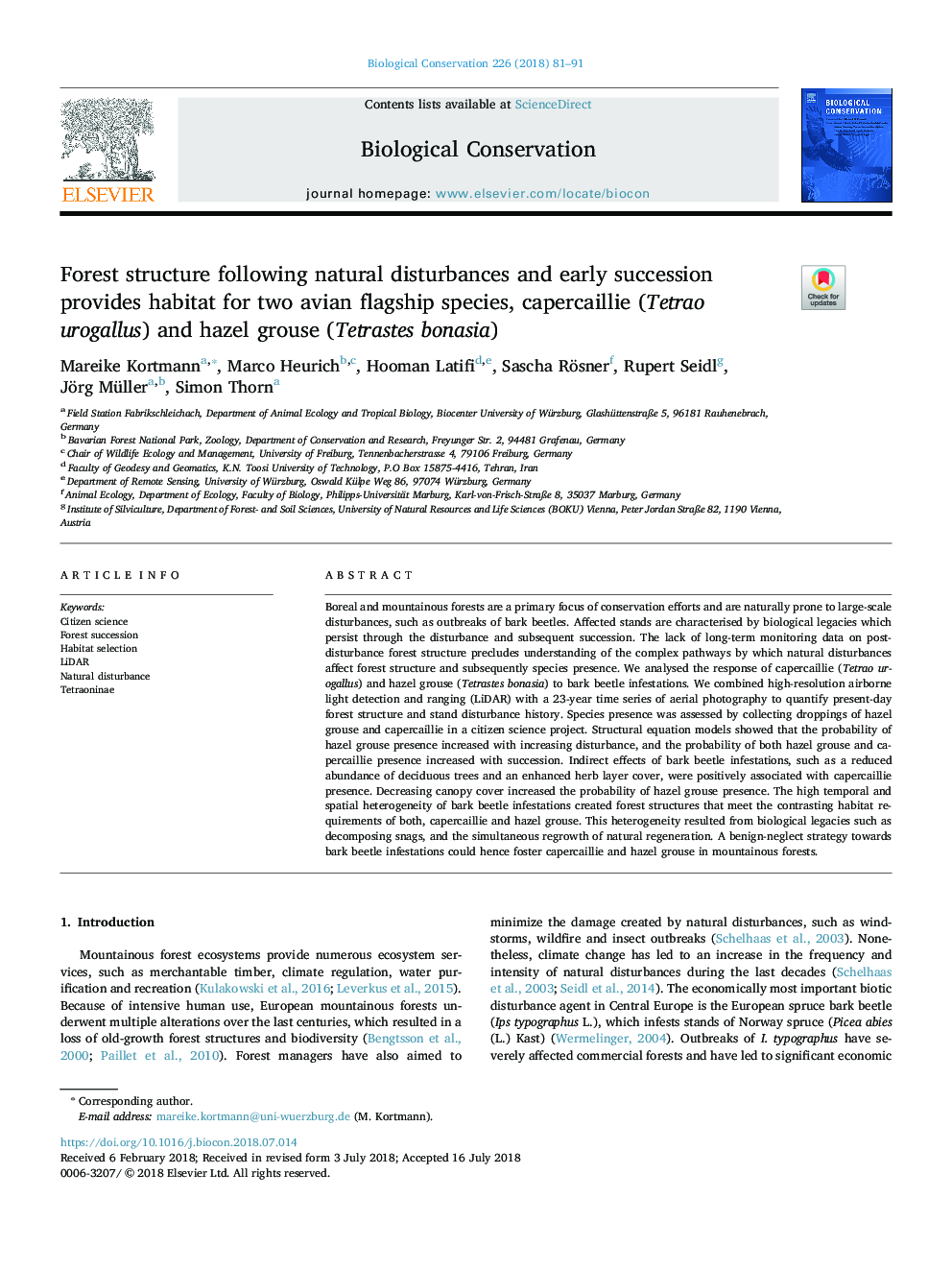| کد مقاله | کد نشریه | سال انتشار | مقاله انگلیسی | نسخه تمام متن |
|---|---|---|---|---|
| 8847091 | 1617879 | 2018 | 11 صفحه PDF | دانلود رایگان |
عنوان انگلیسی مقاله ISI
Forest structure following natural disturbances and early succession provides habitat for two avian flagship species, capercaillie (Tetrao urogallus) and hazel grouse (Tetrastes bonasia)
دانلود مقاله + سفارش ترجمه
دانلود مقاله ISI انگلیسی
رایگان برای ایرانیان
کلمات کلیدی
موضوعات مرتبط
علوم زیستی و بیوفناوری
علوم کشاورزی و بیولوژیک
بوم شناسی، تکامل، رفتار و سامانه شناسی
پیش نمایش صفحه اول مقاله

چکیده انگلیسی
Boreal and mountainous forests are a primary focus of conservation efforts and are naturally prone to large-scale disturbances, such as outbreaks of bark beetles. Affected stands are characterised by biological legacies which persist through the disturbance and subsequent succession. The lack of long-term monitoring data on post-disturbance forest structure precludes understanding of the complex pathways by which natural disturbances affect forest structure and subsequently species presence. We analysed the response of capercaillie (Tetrao urogallus) and hazel grouse (Tetrastes bonasia) to bark beetle infestations. We combined high-resolution airborne light detection and ranging (LiDAR) with a 23-year time series of aerial photography to quantify present-day forest structure and stand disturbance history. Species presence was assessed by collecting droppings of hazel grouse and capercaillie in a citizen science project. Structural equation models showed that the probability of hazel grouse presence increased with increasing disturbance, and the probability of both hazel grouse and capercaillie presence increased with succession. Indirect effects of bark beetle infestations, such as a reduced abundance of deciduous trees and an enhanced herb layer cover, were positively associated with capercaillie presence. Decreasing canopy cover increased the probability of hazel grouse presence. The high temporal and spatial heterogeneity of bark beetle infestations created forest structures that meet the contrasting habitat requirements of both, capercaillie and hazel grouse. This heterogeneity resulted from biological legacies such as decomposing snags, and the simultaneous regrowth of natural regeneration. A benign-neglect strategy towards bark beetle infestations could hence foster capercaillie and hazel grouse in mountainous forests.
ناشر
Database: Elsevier - ScienceDirect (ساینس دایرکت)
Journal: Biological Conservation - Volume 226, October 2018, Pages 81-91
Journal: Biological Conservation - Volume 226, October 2018, Pages 81-91
نویسندگان
Mareike Kortmann, Marco Heurich, Hooman Latifi, Sascha Rösner, Rupert Seidl, Jörg Müller, Simon Thorn,